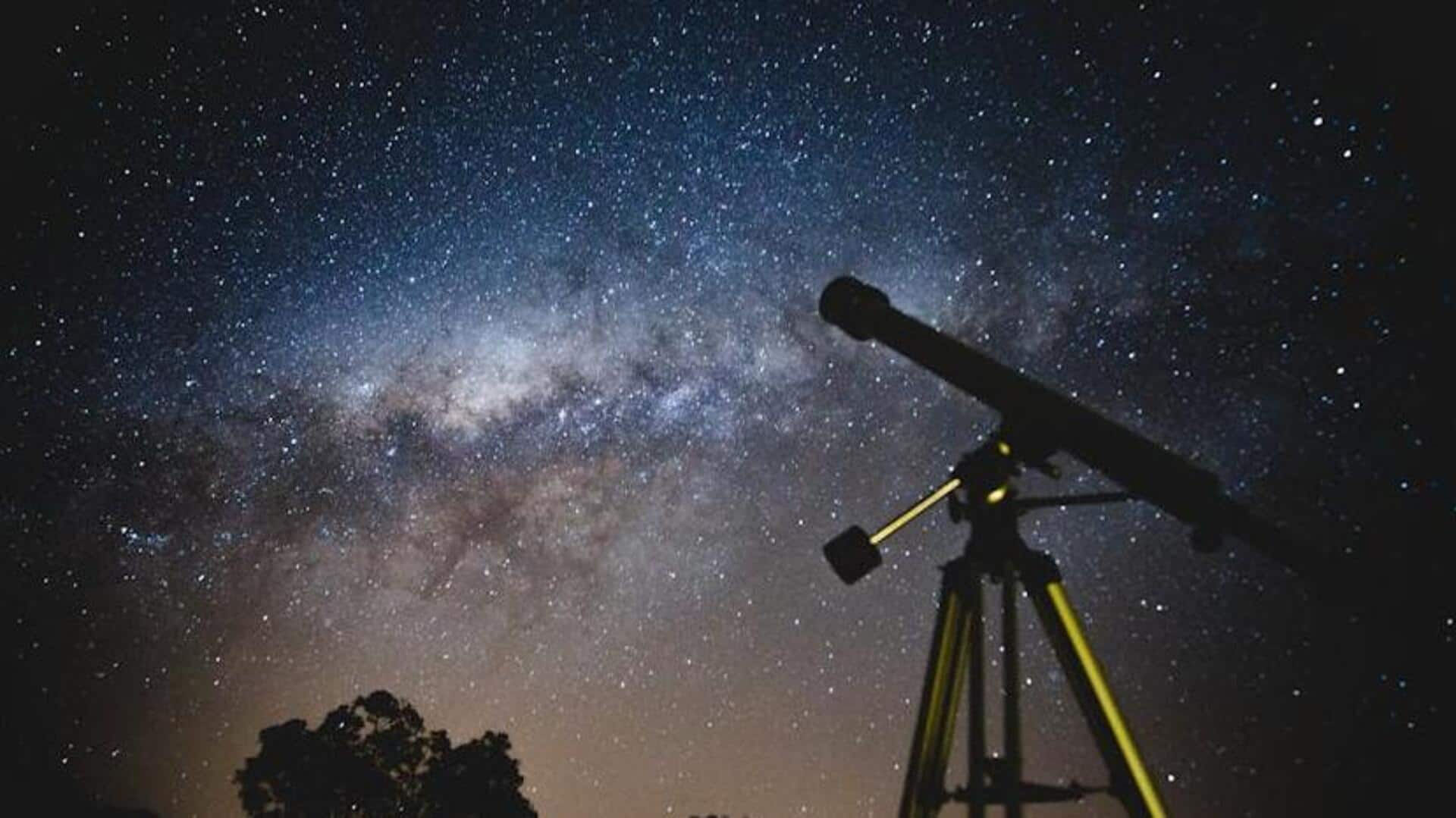
Love stargazing? Spot stars daily with these tips
What's the story
Star mapping links us directly to the universe, requiring the careful observation and recording of celestial positions. This practice not only builds astronomical knowledge but also fosters a sense of cosmic wonder. Committing time each day to this practice cultivates a deeper appreciation for the night sky's wonders, grounding us in a more profound understanding of our place in the cosmos.
Equipment
Choosing the right tools for observation
For mapping stars, you will require telescopes or binoculars, a star chart, and a journal. Telescopes provide high magnification but are expensive. Binoculars are affordable and more suitable for beginners. Star charts help in identifying constellations, and a journal records the shifting positions of stars, fostering a deeper understanding of the celestial sphere over time.
Patterns
Understanding celestial movements
Due to the Earth's rotation and orbit around the Sun, celestial bodies exhibit predictable patterns of motion. Stars appear to move from east to west each night due to the rotation of Earth on its axis. And, as the Earth orbits the Sun, different constellations come into view with the changing seasons. Comprehending these motions is crucial for accurately mapping stars and understanding their correlation to time and seasons.
Consistency
Setting up a regular observing schedule
Consistency is key in forming any new habit, and star mapping is no exception. Select designated days of the week and optimal times for stargazing based on your location and daily routine. While weather conditions and light pollution can impact visibility, strive to maintain a flexible yet dedicated schedule for regular observation. This consistent practice will significantly improve your ability to identify constellations and monitor celestial occurrences over time.
Documentation
Recording observations accurately
Keeping detailed records is crucial in star mapping for documenting changes over time. Each observation should include the date, time (including timezone), weather conditions, equipment used. For example, make notes of the type of telescope or binoculars, specific celestial bodies observed, their positions relative to well-known constellations or landmarks in the sky, any significant events, and personal notes on the experience.
Connection
Engaging with an astronomy community
Becoming a member of an astronomy club or online community can greatly enrich your star-mapping experience. Seasoned astronomers in these groups provide mentorship on observation techniques and understanding astronomical phenomena. Clubs frequently host stargazing events, enabling members to witness special astronomical occurrences such as eclipses or planetary alignments. These can be difficult to observe independently due to equipment limitations or geographical restrictions.